Understanding Ski Bindings: Your Connection to the Snow
Ski bindings are a critical component of your ski setup, acting as the vital link between your boots and your skis. They are designed not only to hold your boots securely to the skis, ensuring efficient power transfer and control, but also, crucially, to release your boots during a fall to prevent injury. Choosing the right type of binding for your skiing style, terrain preference, and ability level is paramount for both performance and safety.
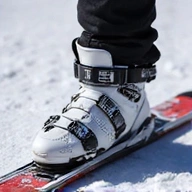
Alpine Bindings
These are the most common type of bindings, designed for resort skiing on groomed trails and off-piste. They offer robust hold and efficient power transfer, making them ideal for downhill performance. Alpine bindings are built to release consistently and safely when subjected to forces exceeding a set DIN (Deutsches Institut für Normung) value, crucial for preventing leg injuries during falls. They are compatible with alpine ski boots featuring ISO 5355 soles.
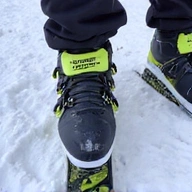
Touring Bindings (Tech/Frame)
Built for backcountry skiing and ski mountaineering, touring bindings prioritize uphill efficiency. There are two main types: "frame" bindings, which resemble alpine bindings but allow the heel to lift for uphill travel, and "tech" or "pin" bindings, which are significantly lighter and use pins to connect directly to inserts in specialized touring boots. Tech bindings offer superior efficiency for long ascents, while frame bindings provide a more traditional downhill feel. Both allow for a free-heel mode for climbing and a locked mode for descent.
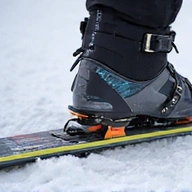
Telemark Bindings
Telemark bindings are unique as they keep the heel free at all times, even during downhill skiing. This allows for the distinctive "telemark turn," characterized by a deep knee bend and a dropped heel. These bindings are designed for a specific style of skiing that combines elements of cross-country and alpine. They typically feature a cable system that holds the boot's toe to the ski while allowing the heel to lift, providing a different feel and requiring a unique technique.
Each binding type serves a distinct purpose and is optimized for specific skiing conditions and styles. Understanding these differences is the first step towards building a ski setup that perfectly matches your aspirations on the snow.
Choosing the Right Ski Bindings: A Comprehensive Guide
Selecting the correct ski bindings is as crucial as choosing your skis and boots. The right bindings enhance performance, improve control, and most importantly, ensure your safety by releasing appropriately during a fall. Several factors come into play when making this decision, from your skiing ability to your physical characteristics and the type of skiing you intend to do.
Key Factors Influencing Binding Choice
- Ski Type and Width: The type of ski (e.g., carving, all-mountain, powder, touring) dictates the appropriate binding. Wider skis often require wider binding brakes to accommodate their dimensions.
- Skier Level (Ability): Beginners, intermediates, and advanced skiers will have different DIN setting requirements, which directly influences the binding model. More aggressive skiers typically need higher DIN maximums.
- Skier Weight and Height: These are primary factors in determining the recommended DIN setting, which is a key safety parameter.
- Boot Sole Length (BSL): Measured in millimeters, BSL is essential for mounting and adjusting bindings correctly. Bindings must be compatible with your boot's BSL range.
- Boot Sole Type: Modern boots can have different sole types (e.g., ISO 5355 Alpine, ISO 9523 Touring, GripWalk, MNC). Bindings must be compatible with your specific boot sole.
- Skiing Terrain and Style: Are you sticking to groomed runs, venturing into the backcountry, or hitting the park? Your preferred terrain dictates whether you need alpine, touring, or freestyle-specific bindings.
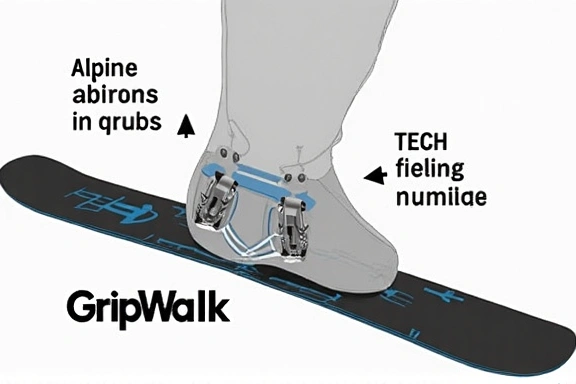
Infographics: How Factors Impact Your Choice
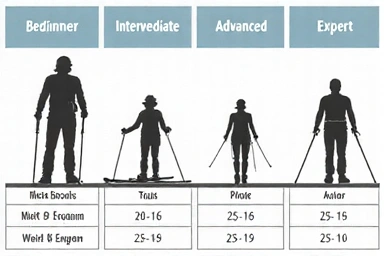
Skier Ability vs. DIN Setting
Your skiing ability directly correlates to the forces your bindings will experience and thus the DIN setting required. Beginners typically use lower DINs for easier release, while advanced skiers require higher settings to prevent premature release during aggressive turns or high speeds.
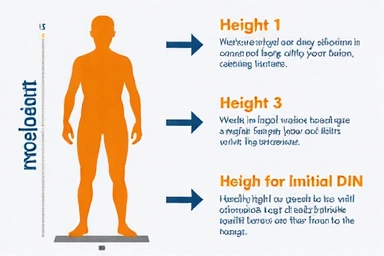
Weight and Height Influence
These fundamental physical attributes are crucial inputs for the DIN calculation chart. They provide a baseline for the binding's release setting, ensuring it is appropriate for your body mass.
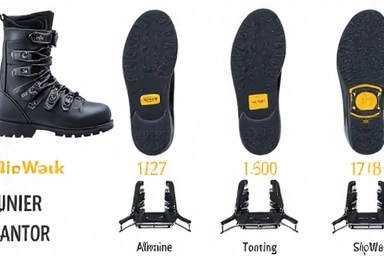
Boot Sole Compatibility
Not all boot soles fit all bindings. Ensure your boot's sole type (e.g., standard alpine, GripWalk, or tech inserts) is compatible with the binding you choose. Many modern bindings are "MNC" (Multi-Norm Certified) for broader compatibility.
Your Personal Binding Selection Checklist
- Determine your Skier Type: Are you a cautious Type I, average Type II, or aggressive Type III skier? Be honest for safety.
- Measure your Boot Sole Length (BSL): This is usually printed on the side of your boot heel in millimeters.
- Identify your Boot Sole Type: Check your boot for ISO standards or GripWalk/Tech inserts.
- Consider your Weight and Height: Have these ready for DIN calculations.
- Evaluate your Skiing Style and Terrain: Are you freeride, park, race, or backcountry oriented?
- Check Binding Brake Width: Ensure the binding's brake width is appropriate for your ski's waist width. It should be slightly wider than your ski's waist.
- Consult a Professional: Always get your bindings mounted and adjusted by a certified technician.
By carefully considering these factors, you can confidently choose bindings that will provide optimal performance, safety, and enjoyment on the slopes. Don't hesitate to use our interactive tools and comparison tables below to aid your decision-making process.
Binding Comparison: Find Your Perfect Match
Use our interactive comparison table to explore various ski binding models from leading brands. You can filter and sort the data to quickly narrow down options that meet your specific needs and preferences.
| Brand | Model | Type | DIN Range | Weight (g/pair) | Price Range | Key Features | Product Page |
|---|---|---|---|---|---|---|---|
| View | |||||||
| No bindings match your criteria. | |||||||
DIN Setting Calculator: Ensure Your Safety
The DIN setting (Deutsches Institut für Normung) on your ski bindings determines the force at which your boots will release from your skis during a fall. A correctly set DIN is crucial for both preventing injuries and ensuring your skis don't release prematurely. Use our interactive calculator to determine your recommended DIN setting based on industry standards.